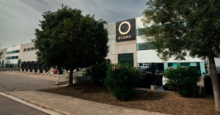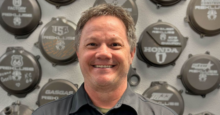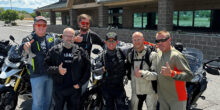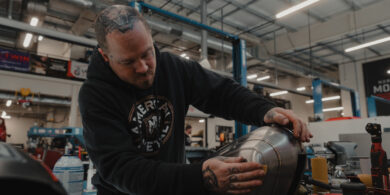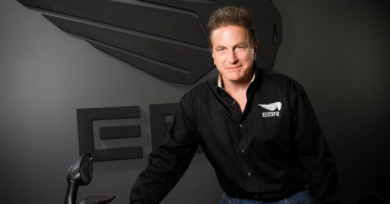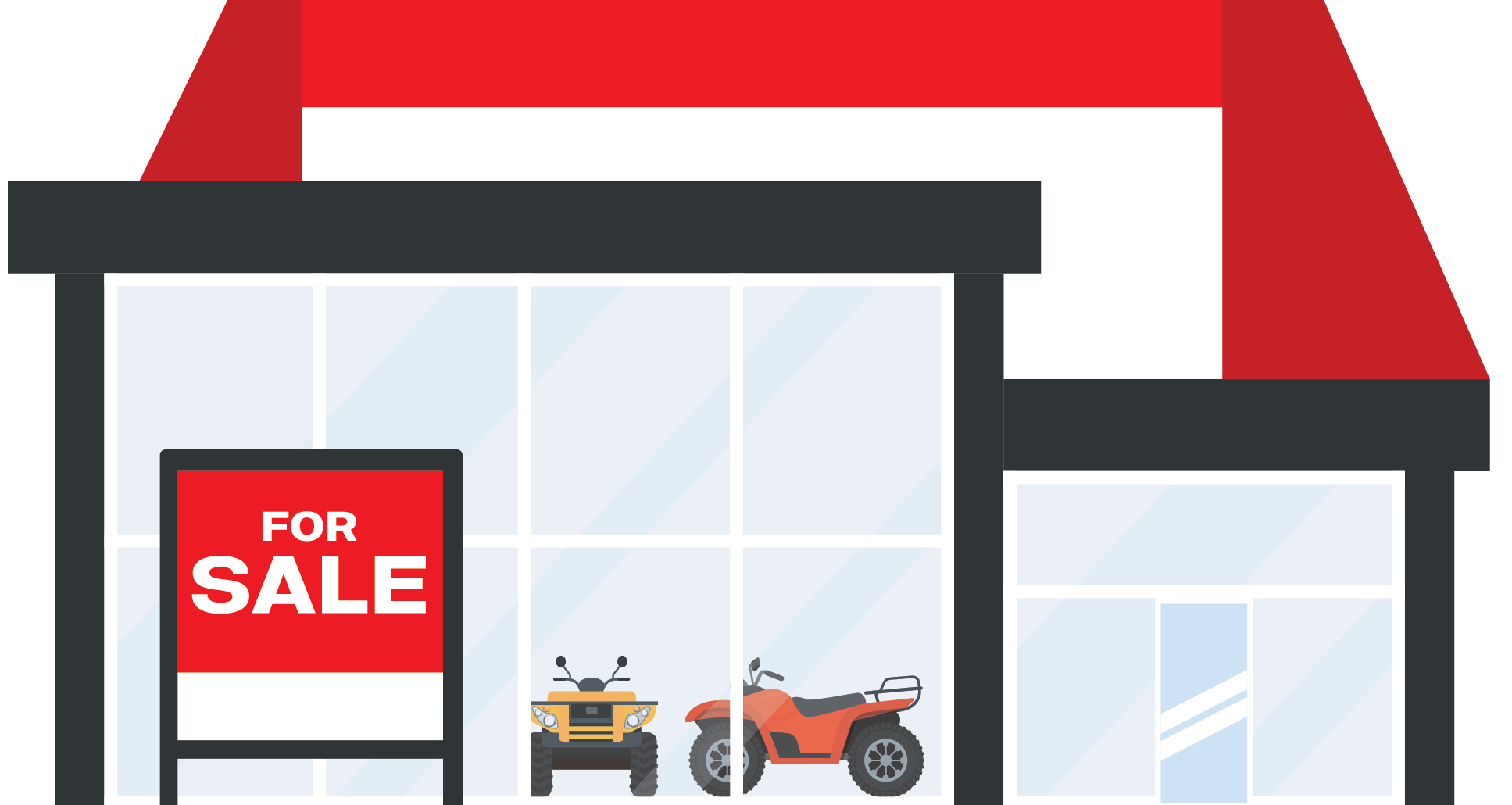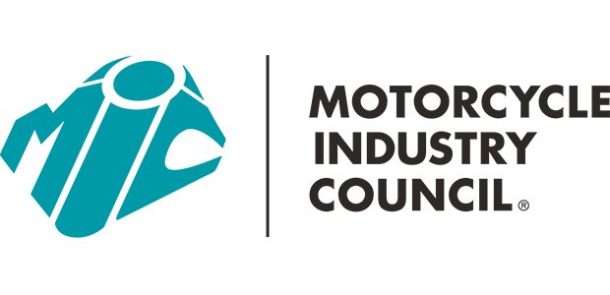Showing presence in the industry
Dealers discover added sales from consumer shows
Winter is a slow time for many dealers, especially those who focus more on motorcycles than snowmobiles, ATVs and side-by-sides, but the season doesn’t have to be a complete washout.
Some riders, especially diehard enthusiasts, find winter as a time to stock up on gear or have their vehicles serviced. But getting those customers thinking about riding when the weather is cold can be difficult, which is why many dealers turn to consumer shows.
Getting to the show
The most well-known series of powersports consumer shows is the Progressive International Motorcycle Shows, which hits a dozen cities from Nov. 18-March 17, but there are also many other shows hosted by industry groups and associations. They’re built as exhibitions for powersports consumers to peruse the latest vehicles, parts, accessories and gear, and to get the customer excited about the next riding season. Because of that focus, shows are a key place for powersports dealers to reach out to their market.
“That’s where all the traffic is,” explained Bob McCann, director of education at ARI Network Services.
There are costs associated with exhibiting at an industry show, but McCann says it’s worth the ROI to attend and maintain a presence year after year. Some dealers avoid shows because of the costs of booth space and making the investment might not be evident in the first year at a show, but as a dealer builds a presence, consumers begin recognizing the store’s name and booth and recalling the dealership when they’re in the market for powersports products.
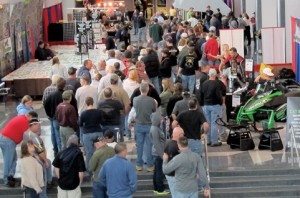
“Skipping a show right now for the short term … you might get a win out of it, but longer term, you’re going to be forgotten about,” McCann said.
Though powersports-related shows are those most commonly attended by dealers, other types of consumer shows — such as outdoor, ice fishing, RV or farm shows — may be of interest if they cater to the same clientele.
“You could look at the demographic and say the people with these types of interests have these types of income and these types of other interests,” McCann explained. “If someone’s making it really attractive for you to show up, and it’s not going to cost you a lot of money, you should look into it.”
In addition to the Detroit IMS and the Snow Show in Detroit, Steve Hutson, sales manager of Coloma Motorsports in Coloma, Mich., attends the South Bend Boat Show in Indiana as well as other area fairs and events.
“It’s just a way to be out in front of people, because if you don’t have people coming into the showroom, it’s just a way to reach out to people outside of our store,” he said.
A knockout display
Dealers often attend consumer shows to sell merchandise on-site, encourage customers to visit their physical stores, or both. Either way, an effective booth is key to drawing in customers.
“It all becomes the size of your display area, so if you have a limited amount of space, you say ‘What am I going to get the most bang for the buck with?’” McCann said.
Don Roes, co-owner of D&D Racing in Lowville, N.Y., brings one or two snowmobiles to display in addition to some of his PG&A, which he sells at the shows he attends.
“We used to go with no product, just sit and talk to people, and a lot of people asked why we didn’t bring parts, so we ended up bringing two or three more people with us and then basically setting up part of a showroom and selling it right there,” he said.
Sometimes on-site sales are fruitful for Roes, while other times, they’re not. But Roes now brings more product because it shows customers what he carries.
A compelling display is especially important to dealers who travel long distances in the hopes of bringing in profit in on-site sales. Those dealers only have recognition from their past visits to the show and don’t have local consumers.
Mike Bristow, owner of Bristow’s Kawasaki & Polaris in St. Cloud, Minn., makes sure his booth is stocked with eye-catching clothing and displays as he travels throughout the Midwest and as far away as New York and New Hampshire during show season.
“Our variety of clothing is larger than anyone else’s, and our display is done well,” he said.
It’s important that a dealer carefully consider what types of product it’s bringing to a show, McCann says. Many dealers use shows to closeout non-current inventory, but McCann says a dealership should also bring new product to show its stock is fresh. He also recommends dealers bring, if possible, their vehicle with the best value proposition, a vehicle that’s highly accessorized and its most popular vehicle, if that doesn’t fit into the first two categories.
“You need to have a balance of price-featured product and feature-rich product,” he said.
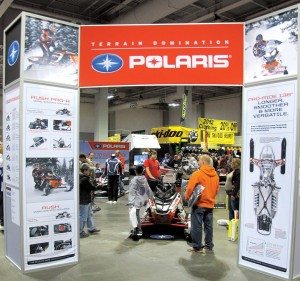
Dealerships with strong, up-to-date websites should also consider showcasing their sites at the show. However, convention hall Internet prices can be expensive, so a dealership should consider the ROI of paying for on-site Internet or check to see if a mobile hot spot would suffice.
“You can’t bring everything that you have to the show, so you could have a kiosk or a big screen TV with the Web where you can showcase your website. The websites are really a nice extension [of the dealership],” McCann said.
Driving traffic
A catchy display can go a long way to get customers into a booth, but other strategies should also be deployed to increase booth traffic. A dealership’s attendance at a show should be advertised before the show begins to encourage not only new customers, but also loyal shoppers, to stop by the booth.
An email should be sent to a dealership’s entire customer base, explaining where the booth is and promoting the fun aspect of the show, McCann said.
“You do that a time or two before the show, linking them to information about the show, but make sure that brings them back to your website,” he explained. “Add a page about the show. Go to the show website, copy that information and add it to your website. Then they’re only a click away from looking at your products.”
Deals at the show should not be promoted early, or possibly at all, to prevent customers from becoming discouraged by stopping in the dealership to make a purchase at full price the week prior, McCann said. He also recommends that if possible, dealers should distribute show tickets to prospects. Make those prospects come into the dealership to pick up the tickets.
“Then they actually feel obligated to come by your booth at the show,” he said.
Turning shoppers into buyers
As nearly everyone in retail has learned, just because a customer shows interest in a product or service, doesn’t mean they’re going to take it upon themselves to initiate a relationship with the retailer or even go through with a purchase.
The first way to build a positive relationship at a show is to ensure that customers have a memorable experience at the booth. Staffing is key to that equation. For some dealers who have small booths and don’t sell actual product on-site, one or two staffers may suffice, but larger, more spacious booths need more employee support.
Even though Bristow travels far for many of the shows he attends, he brings seven to 10 staffers to each.
“You have to be able to handle the customers fast,” he said.
If a crowd gets out of hand, McCann recommends starting a line, possibly handing out numbers or wristbands and maybe providing entertainment, such as a balloon twister, to entertain guests.
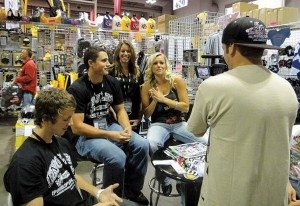
“Make sure that anyone who walks into that display is going to be promptly greeted and you’re able to take care of them,” he said.
Many dealers bring a variety of staff members from each department at the dealership in order to bulk up the show staff and provide more value to their visitors.
Once a technician or service manager begins interacting with a customer, he or she can hopefully sell the customer on a service visit, increasing the show’s ROI.
Follow-up
As prospects at consumer show are likely visiting a number of dealership booths, it’s important to stay top-of-mind following their visits.
“Follow-up is as important, if not more important, than anything you do at the show,” McCann said.
A salesperson should be asking for and receiving, at a minimum, the name, email address and phone number of each booth prospect. McCann doesn’t consider everyone at the show an ideal prospect, so he discourages a generic sign-up-to-win contest, but instead recommends collecting information from those most serious about making a purchase in the coming days, weeks, months or even years.
“The best people are the ones that you had contact with, but they didn’t buy right now, so you have to make sure they get into a secured database,” McCann said.
Follow-up should begin shortly after each customer leaves the booth if the dealer wants to get a quick reminder in a prospect’s mind.
“The first thing you do is send out an email,” McCann said.
If possible, a dealer should have a separate staff member working behind the scenes at the show, entering the prospects into a database and immediately emailing those customers after their visits. McCann recommends that the email be sent using the salesperson’s email address, rather than the dealership’s name, because it’s more likely to be opened. The message should thank the customer for visiting the booth, tell the prospect the salesperson will be calling soon, provide information about how to make a deposit on a vehicle and link back to the dealership’s website for more information.
“Frankly, it’s not going to sell anything; it’s just another piece of the pie that’s going to make this happen,” McCann said.
The morning after a prospect visits the booth, he or she should each be called by the salesperson with whom they interacted, McCann added. Each morning, sales staff can be handed reports from the previous day and make calls while traffic at the show is slow.
After the show concludes, McCann recommends dealers host an open house the following weekend.
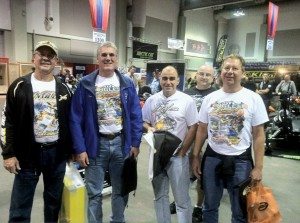
Promotions build booth traffic
Special events or promotions can also encourage traffic. Ingles Performance of Phoenix, N.Y., has attended the Big East Powersports Show for more than a decade, and co-owner Robin Ingles has discovered a promotion that not only gets her customers excited but also gets her dealership’s name out among the crowd.
“We do a promotion where if you wear an Ingles T-shirt to the show, you get a free prize,” she said. “This year’s prize is one of those athletic bags, one of the backpacks, with a can coozie and little candies.”
Each year, 50-75 customers participate. Ingles said the loyal fans seem to get into the giveaway, and the dealership staff is excited to see so many people walking around the show in their gear.
Don Roes of D&D Racing in Louisville, N.Y., offers 10 percent off product being picked up at shows, while providing the discount and free shipping for items that need to be ordered.
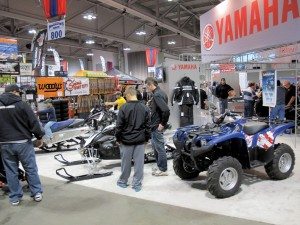
Staff an OEM booth
Oftentimes it can also be beneficial for a dealer to have staff in an OEM booth.
Steve Hutson of Coloma Motorsports in Michigan usually works in the Yamaha booth at the shows he attends. Robin Ingles, co-owner of Ingles Performance of Phoenix, N.Y., brings a few extra salespeople to the Big East show to staff the Polaris and Ski-Doo booths.
“Some people just don’t know us, so they’re going to the manufacturer’s booth to look at sleds, so we want to be there as well,” she said.
Once the customers are comfortably in a booth, the sales process can begin. It’s similar to the strategy used in the store, but with increased speed, McCann says. The salesperson will have to qualify each customer’s buying prospects by quickly analyzing if the person is ready to buy today, if all the decision-makers are present and if the customer wants to trade in a vehicle. If the customer is ready to buy immediately, the salesperson can begin a full pitch. If not, the customer should still be considered for a future sale.
“We still have to give them a good experience,” McCann said. “If we dismiss them, they’ll end up at a different booth buying from a different dealership.”

